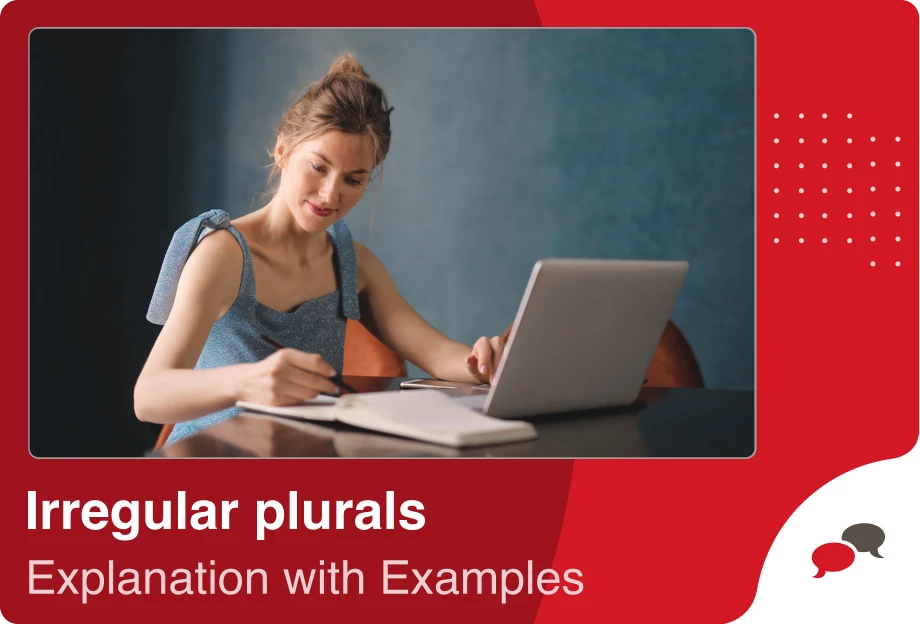Punctuation marks are essential tools in English that help us organize our words into clear and comprehensible sentences. They add nuances to our expressions and dictate the flow of our thoughts. Here, we have put together a guide to help you learn about these crucial elements of writing. This guide covers the fundamental punctuation marks, providing information on their usage and roles in enhancing clarity.
The Importance of Punctuation in English Writing
Punctuation plays a crucial role in English writing because it helps clarify the meaning of sentences. For example, commas can show a pause or separate items in a list, while periods signal the end of a statement. Without punctuation, sentences can become confusing or misleading. Consider the difference between “Let’s eat, Grandma!” and “Let’s eat Grandma!” In the first sentence, punctuation shows a friendly invitation to eat together, but without the comma, the sentence suggests a humorous yet alarming idea. Thus, proper punctuation is important for clear communication and helps the reader understand the writer’s intended message.
Period (.)
The period is a simple but important punctuation mark in English. It is mainly used to end sentences, like “She enjoys reading historical novels.” This shows the sentence is finished.
Periods are also used in shortened forms of words, called abbreviations. For example, “Doctor” becomes “Dr.,” and “United States” becomes “U.S.” This helps make the writing shorter and easier to read. Most of the time, periods are not used in acronyms, which are short forms made from the first letters of a group of words. “NASA,” which stands for National Aeronautics and Space Administration, doesn’t have periods.
Periods are also used after commands or requests, such as “Please close the door.” It tells us the command is complete. When someone states something that sounds like a question but is written as a statement, like “I wonder what time the meeting starts,” a period is used at the end too.
Periods help make sentences clear by showing where they end. This makes it easier for readers to understand and follow the writing.
Comma (,)
The comma is a very useful punctuation mark in English. It helps break up parts of sentences to make them clearer.
First, commas are used to list things. For example, in the sentence “I bought apples, oranges, and bananas,” commas separate the items in the list.
Commas also help us add extra information without starting a new sentence. For instance, “My brother, who lives in New York, is visiting us next week.” Here, the commas around “who lives in New York” tell us more about the brother.
We use commas after introductions in sentences too. Like in “After the show, we went to dinner.” The comma after “show” helps show that “After the show” is an introduction to what happened next.
Commas also come in handy in sentences with more than one action. They separate the parts and make the sentence easier to read. For example, “I finished my homework, and then I watched a movie.”
Question Mark (?)
The question mark is a punctuation mark used primarily to indicate a question. It’s straightforward and essential for clear communication. When you ask a direct question, you end the sentence with a question mark. For example, “What is your name?” This lets the reader know a response is expected.
Question marks are not used for indirect questions, which are statements that imply a question. For instance, in the sentence “I wonder if she will come today,” there is no question mark because it’s a statement expressing curiosity, not a direct question.
Additionally, question marks can express uncertainty or doubt within parentheses. For example, “He was born in 1990 (?)” suggests that the year 1990 is not confirmed.
Exclamation Mark (!)
The exclamation mark is a punctuation mark used to express strong feelings or a high volume (shouting), and it is also used to emphasize a point. For example, if someone is surprised or excited, they might write, “Wow! That was amazing!” Here, the exclamation mark helps convey excitement.
Exclamation marks are also used for commands that are particularly urgent or forceful. An example would be, “Stop! That’s dangerous!” In this case, the exclamation mark increases the sense of urgency.
Additionally, this punctuation can express a high degree of emotion, such as anger, happiness, or surprise. For instance, “I can’t believe you did that!” shows strong emotion.
Colon (:)
The colon is a punctuation mark used to introduce something specific, like a list, a quote, or an explanation. It acts as a signal that something important or detailed is about to follow.
One common use of the colon is to introduce a list. For example, in the sentence “She has three hobbies: painting, reading, and hiking,” the colon precedes the list of hobbies, clearly showing what these hobbies are. Colons can also introduce an explanation or clarification. If you say, “He finally realized the truth: he was lost,” the colon introduces the explanation of what the truth is.
Another use is before a quote. For example, “She said the following: ‘I will be there by 8 PM.'” Here, the colon introduces the quote, letting the reader know that what follows is someone else’s exact words.
Semicolon (;)
The semicolon is a punctuation mark that helps clarify complex lists and connects closely related sentences. It’s like a stronger comma but not quite a period.
One key use of the semicolon is to separate items in a series when those items contain commas. This prevents confusion. For example, in the sentence “We visited Paris, France; Rome, Italy; and Madrid, Spain,” the semicolons make it clear that the cities and countries are paired together.
Semicolons also connect two independent clauses that are closely related but could stand as separate sentences. This shows a closer relationship than using a period. For instance, “She loves to read; her brother prefers movies.” Here, the semicolon links two related thoughts about personal preferences. Also, semicolons can be used before words like “however,” “therefore,” or “namely” when they introduce a complete sentence. For example, “He didn’t enjoy the movie; however, he liked the music.” The semicolon here helps emphasize the contrast between the clauses.
Parentheses ()
Parentheses are a pair of punctuation marks used to include additional information within a sentence that is helpful but not essential to the main point. These marks help clarify, add context, or offer brief explanations without disrupting the flow of the main text.
For instance, you might use parentheses to include a necessary detail or clarification. In the sentence “He finally decided to visit his brother (who had moved to Canada last year),” the information within the parentheses provides context about where the brother lives, which is supplementary to the main action.
Parentheses can also be used to provide translations, dates, or other explanatory details. For example, in a historical document, you might see, “The Declaration of Independence (1776) marked a significant event in American history.” Here, the year within the parentheses helps pinpoint the exact timing of the event mentioned.
Parentheses are often used in academic and technical writing to include references, statistical data, or citations that support the text. For example, “Studies show that regular exercise (Smith, 2020) can significantly decrease the risk of chronic diseases.”
Apostrophe (‘)
The apostrophe is a small punctuation mark primarily used for indicating ownership and shortening words. For showing ownership, the apostrophe signifies what belongs to whom. For instance, in “Sam’s hat,” the apostrophe and ‘s’ indicate that the hat belongs to Sam. When an item belongs to more than one person, such as “the cats’ toys,” the apostrophe is placed after an ‘s’ to show plural ownership. If a name ends in ‘s’, like “James,” it can be written as “James’s car” or “James’ car,” to indicate that the car belongs to James.
The apostrophe also serves to shorten words to make them easier to read and more conversational. For example, “do not” becomes “don’t” and “it is” turns into “it’s.”
Quotation (“ ”)
The quotation mark is used in writing to denote spoken words, quotations, and certain titles. It comes in pairs to enclose the specified segment of text, distinguishing it from the rest of the text.
Quotation marks are primarily used to indicate direct speech or dialogue in text. For example, when a character in a story says something, their words are enclosed in quotation marks: “I’ll see you tomorrow,” he promised. This lets the reader know these words were spoken by the character.
They are also used to quote someone’s exact words in written form, such as in journalism or academic writing. For instance, a newspaper article might include a quote from an interviewee: The mayor said, “We will rebuild the bridge by next year.” This usage ensures that the reader understands these are the precise words spoken by the mayor. In addition to speech and quotations, quotation marks can denote titles of short works or parts of a larger collection, such as articles, short stories, poems, and songs. For example, one might refer to the poem “The Road Not Taken” by Robert Frost.
Quotation marks have specific rules for use with other punctuation, which can vary by region. In American English, commas and periods placed at the end of a quote are included inside the quotation marks, while in British English, they are placed outside unless they are part of the quoted material.
Parenthesis, Bracket, Braces ( ), [ ] , { }
Parentheses, brackets, and braces are three types of punctuation marks used to include additional information in a sentence, but each serves a distinct purpose and context in writing.
Parentheses ( ) are used to insert supplementary information that clarifies or adds to the main text but is not essential to its meaning. This information can be a clarification, an aside, or additional details. For example, in the sentence “He finally decided to call her (his friend from college),” the information within the parentheses provides extra context about who she is. Parentheses can also be used to include references or citations in academic writing.
Brackets [ ] are primarily used within quoted speech to add information, clarify, or make comments that were not originally part of the quote. This helps the reader understand the context or alterations made for clarity. For example, in journalistic or academic writing, if quoting someone who says, “He spoke to me,” and the speaker’s name is John, the writer might clarify: “[John] spoke to me.”
Braces { } are less common in regular prose and are mostly used in specialized types of writing. In programming, braces are used to define blocks of code. In mathematical contexts, they are used to group numbers or set elements together, such as in the set notation {1, 2, 3, 4}, indicating a group of numbers.
Ellipsis (…)
The ellipsis is a punctuation mark consisting of three dots (…). It serves several important functions in writing, primarily indicating the omission of words, creating a pause for effect, or suggesting unfinished thoughts.
1. Omission of Words: The ellipsis is used to show that some words have been left out of a quote or a text. This is useful in academic writing or journalism when quoting a source but needing to shorten the quote for brevity. For example, if the original text says, “After many years of research, we finally reached a conclusion that the hypothesis was correct,” it could be shortened to “After many years of research… the hypothesis was correct.” This indicates that words have been left out but the essential meaning is preserved.
2. Creating a Pause: In narrative or creative writing, ellipses can indicate a pause in a character’s speech, suggesting hesitation or trailing off. For example, “I’m not sure what to do… Maybe I should call her.” This use of the ellipsis conveys uncertainty or a moment of thoughtfulness in the speaker.
3. Unfinished Thoughts: An ellipsis can also suggest that a speaker has left a thought incomplete, which can add an element of suspense or imply meanings beyond the words spoken. For example, “If he finds out…” leaves the consequence unsaid but understood by the context.
Hyphen (-)
The hyphen is a short punctuation mark (-) used primarily to link words and parts of words, enhancing clarity and readability in writing. It plays a crucial role in forming compound words, where it combines two or more words to create a new meaning that might be unclear if the words were separate. For example, the term “well-known artist” uses a hyphen to link “well” and “known,” clearly modifying “artist.”
Hyphens are also essential for avoiding ambiguity in phrases where multiple words together describe a noun. In instances like “small-business owner,” the hyphen clarifies that the business is small, not the owner. Without the hyphen, the intended meaning of the phrase could be misunderstood.
In addition to forming compounds and clarifying phrases, hyphens are used in writing numbers and fractions, such as “thirty-three” or “two-thirds.” They help maintain a clean and professional appearance in texts that include such numeric expressions.
Dash (–)
The dash is a punctuation mark that is longer than a hyphen and comes in two forms: the en dash (–) and the em dash (—). Each serves specific roles in writing, adding structure to sentences.
The em dash is the more commonly used of the two and is particularly versatile. It can replace commas, parentheses, or colons to enhance readability or emphasize a part of the sentence. For instance, when an em dash is used in place of commas, it can make a side comment or interruption stand out more distinctly—like this—thereby drawing more attention to it than commas typically would.
The en dash, slightly shorter than the em dash, is primarily used to indicate ranges, such as numbers, dates, and distances. It suggests a connection or contrast between values, like in “2001–2003” or “pages 10–20.” The en dash can also be used to connect places in a relationship of travel, such as a “New York–London flight.”
Frequently Asked Questions About Punctuation in English
What are the punctuation marks in English?
The punctuation marks in English are the period, comma, exclamation mark, question mark, colon, semicolon, dash, hyphen, parentheses, brackets, braces, apostrophe, quotation marks, and ellipsis.
How to use punctuation correctly?
To use punctuation correctly, understand each mark’s function in clarifying and organizing writing, and consult style guides for rules specific to different contexts.
What is the (:) called?
The punctuation mark (:) is called a colon.
When to use colon?
A colon is used to introduce a list, a quote, an explanation, or an example after a clause that is complete.
Would you like to put into practice what you have learned about Punctuation in English? If you wish, you can explore over 20,000 interactive video lessons on EnglishCentral, improve your vocabulary, and practice pronunciation. Alternatively, during live 1-on-1 English lessons, you can review what you have learned with your personal English tutor. How about signing up for EnglishCentral and starting to learn English right away?











